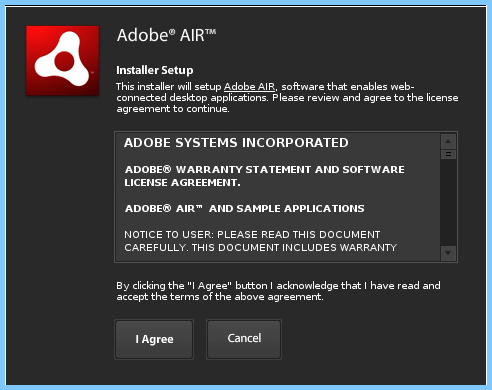

Programs that run on Java, for example, require the Java Virtual Machine runtime engine installed on the computer.
#Adobe air runtime for mac software
A runtime engine is simply computer software that other applications need to use in order to run properly it translates language within a program into machine language, the simple, lowest level language (essentially 0s and 1s) the central processing unit (CPU) can understand. The company calls it a "cross-operating system runtime that lets developers combine HTML, Ajax, Adobe Flash, and Flex technologies to deploy rich Internet applications (RIAs) on the desktop." Adobe is marketing AIR toward developers, businesses and everyday consumers alike, and the company offers the program as a free download on its Web site.īefore we get into the nitty-gritty of Adobe AIR, it helps to understand a few key terms and break down what it means to be a "cross-operating system runtime" that can run desktop applications.ĪIR is, first of all, a runtime engine at its most basic. In early 2008, Adobe offered up its 1.0 release of Adobe Adobe Integrated Runtime (AIR). So it makes sense that Adobe's next step is to make the connection between the desktop and the Internet as seamless as possible.

When it comes down to it, Adobe has changed the way we handle and develop content, both on the desktop and over the Internet. Think about it - without Photoshop, there would never be such a thing as an LOLcat to share with friends, and the world would be a sadder place. On top of this, the company is also behind several important design applications, including Adobe Illustrator, Adobe Photoshop and Adobe InDesign, products that allow developers and everyday users to easily create and manipulate everything from a single image to large presentations. Businesses use it to pass documents around easily in small file sizes, and nearly anyone who owns a desktop or laptop uses PDFs to view photos or read articles - it's like having an unlimited photocopier on your computer.
#Adobe air runtime for mac portable
The Portable Document Format (PDF), for instance, is one of the most commonly used compact file standards available. Since John Warnock and Charles Geschke formed the company in 1982, Adobe Systems has made a lot of what we see on our computers and the information we pass around possible.


 0 kommentar(er)
0 kommentar(er)
